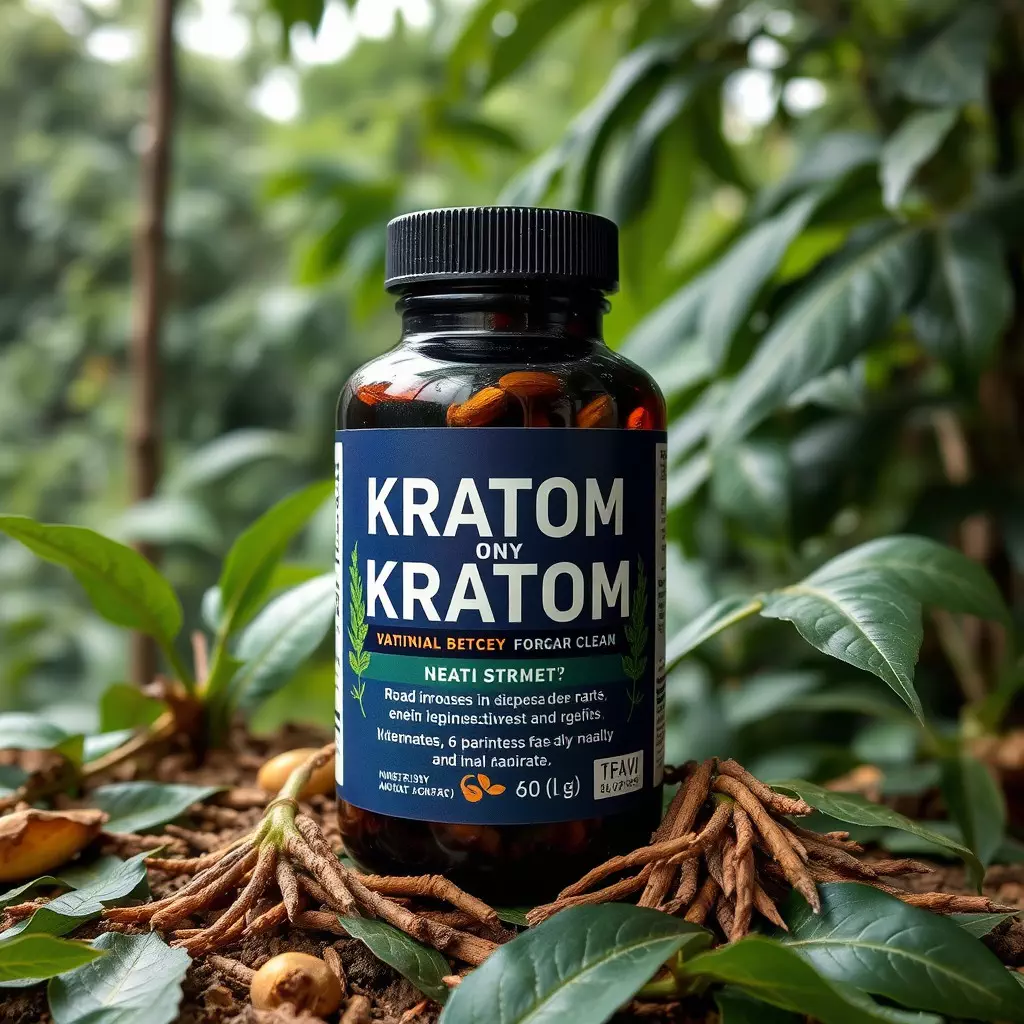Kratom, derived from the Southeast Asian Mitragyna speciosa tree, has garnered attention for its potential anti-inflammatory and analgesic effects due to its primary alkaloids, mitragynine and 7-hydroxymitragynine. These compounds may interact with opioid receptors, offering a natural approach to managing chronic pain and inflammation associated with conditions like arthritis and fibromyalgia. Research suggests these alkaloids could modulate the immune system by suppressing pro-inflammatory cytokines, but safety and efficacy can vary among users, emphasizing the importance of medical guidance when using kratom. High-quality, standardized kratom extracts should be used as directed to maximize therapeutic effects while minimizing risks. Kratom strains like Maeng Da are celebrated for their balanced alkaloids, Bali for its sedative qualities, and White Borneo for its stimulating properties without drowsiness, each offering distinct benefits for inflammation reduction and pain management. A holistic approach to pain management that includes kratom can be complemented by physical therapy, acupuncture, and mindfulness practices. Users should consult healthcare providers due to potential interactions with other medications and consider incorporating dietary changes, consistent exercise, and stress management into their regimen for a comprehensive strategy that supports the body's healing processes and promotes overall well-being.
exploring the potential of kratom for natural pain management, this article delves into how this botanical supplement can aid in inflammation reduction and offers insights on selecting the right strains. We will guide readers through integrating kratom responsibly within a broader holistic approach to alleviating chronic pain, ensuring a comprehensive understanding of its pain-relieving properties. Join us as we explore the nuances of natural pain management with kratom supplements.
- Understanding Kratom's Role in Inflammation Reduction
- Exploring Kratom Strains and Their Pain-Relieving Properties
- Integrating Kratom into a Holistic Natural Pain Management Plan
Understanding Kratom's Role in Inflammation Reduction

Kratom, a tropical evergreen tree native to Southeast Asia, has garnered attention in the realm of natural pain management due to its potential effects on inflammation reduction. The active compounds found within kratom leaves, primarily mitragynine and 7-hydroxymitragynine, are believed to interact with the body’s opioid receptors, providing analgesic properties that can help alleviate chronic pain. Studies suggest that these alkaloids may also exert anti-inflammatory effects by modulating immune responses and inhibiting pro-inflammatory cytokines, which are key players in the inflammation process. This dual mechanism of action sets kratom apart as a potential natural alternative for those seeking relief from conditions characterized by persistent inflammation and pain, such as arthritis or fibromyalgia. It’s important to approach the use of kratom with caution, as its efficacy and safety profiles can vary among individuals, and it should be used in conjunction with professional healthcare guidance. The anti-inflammatory benefits of kratom are an area of ongoing research, with the potential for significant contributions to natural pain management strategies. Users interested in exploring kratom for inflammation reduction should prioritize high-quality, standardized kratom extracts and adhere to recommended dosages to mitigate risks and optimize potential therapeutic benefits.
Exploring Kratom Strains and Their Pain-Relieving Properties

Kratom, a tropical evergreen tree native to Southeast Asia, has been traditionally used for its medicinal properties, including pain management. The plant’s leaves contain alkaloids such as mitragynine and 7-hydroxymitragynine, which are believed to be responsible for its analgesic effects. When exploring kratom strains for inflammation reduction and pain relief, one must consider the distinct alkaloid profiles of each strain, which can influence their efficacy and the type of pain they address best. Maeng Da Kratom, for instance, is renowned for its balanced alkaloid content that promotes a potent analgesic effect suitable for various types of inflammatory or chronic pain. Another notable strain is Bali Kratom, known for its sedative properties, making it a popular choice for those suffering from persistent pain conditions who also struggle with sleep disturbances. Red Bali, in particular, is often praised for its strong pain-relieving qualities. Meanwhile, White Borneo Kratom is celebrated for its stimulating effects, which can be beneficial for pain relief without the sedation associated with some strains. Each kratom strain offers a unique spectrum of pain-relieving properties that can potentially reduce inflammation and provide comfort to individuals dealing with different pain challenges. It’s important to note the individual variability in responses to kratom, as well as the potential for side effects or interactions with other medications, which underscores the necessity for careful consideration and professional guidance when incorporating kratom into a natural pain management regimen.
Integrating Kratom into a Holistic Natural Pain Management Plan

Kratom, a botanical supplement derived from the leaves of Mitragyna speciosa, has garnered attention in natural pain management regimens due to its potential anti-inflammatory properties. For individuals seeking to integrate kratom into a holistic approach for pain relief, it is crucial to understand how this substance can modulate inflammation reduction with kratom. Kratom contains alkaloids such as mitragynine and 7-hydroxymitragynine, which are believed to interact with the body’s opioid receptors, providing pain-relieving effects without the addictive side effects commonly associated with prescription opioids. Inflammation is a common underlying mechanism in various chronic pain conditions, and kratom may offer relief by reducing inflammatory responses. This natural supplement can be synergistic with other holistic practices like physical therapy, acupuncture, and mindfulness techniques, creating a comprehensive plan tailored to the individual’s unique needs.
When incorporating kratom into a pain management strategy, it is important to approach it with careful consideration of dosage and strain selection. The right balance of strains—such as the stimulating Maeng Da or the calming Bali—can help manage both acute and chronic pain while minimizing adverse effects. It is also essential to consult with a healthcare provider before integrating kratom into one’s regimen, as it can interact with other medications and may not be suitable for everyone. A holistic plan that includes kratom should also encompass dietary modifications, regular exercise, and stress management practices to ensure a well-rounded approach to natural pain relief. This multi-faceted strategy aims to enhance the body’s innate healing capacity and improve overall quality of life without relying solely on pharmaceutical interventions.
Incorporating kratom as part of a holistic approach for inflammation reduction and pain management offers a promising alternative for many individuals. This article has delved into the nuanced effects of various kratom strains on pain relief, highlighting their distinct roles in managing discomfort. By understanding how these supplements can be seamlessly integrated into daily routines, one can effectively explore their potential benefits for inflammation reduction and pain mitigation. It is clear that with careful consideration and guidance from healthcare professionals, kratom may play a significant role in enhancing overall well-being without relying on traditional pharmaceuticals. As such, further research is warranted to fully comprehend its efficacy and to ensure safe and informed usage within natural pain management plans.






